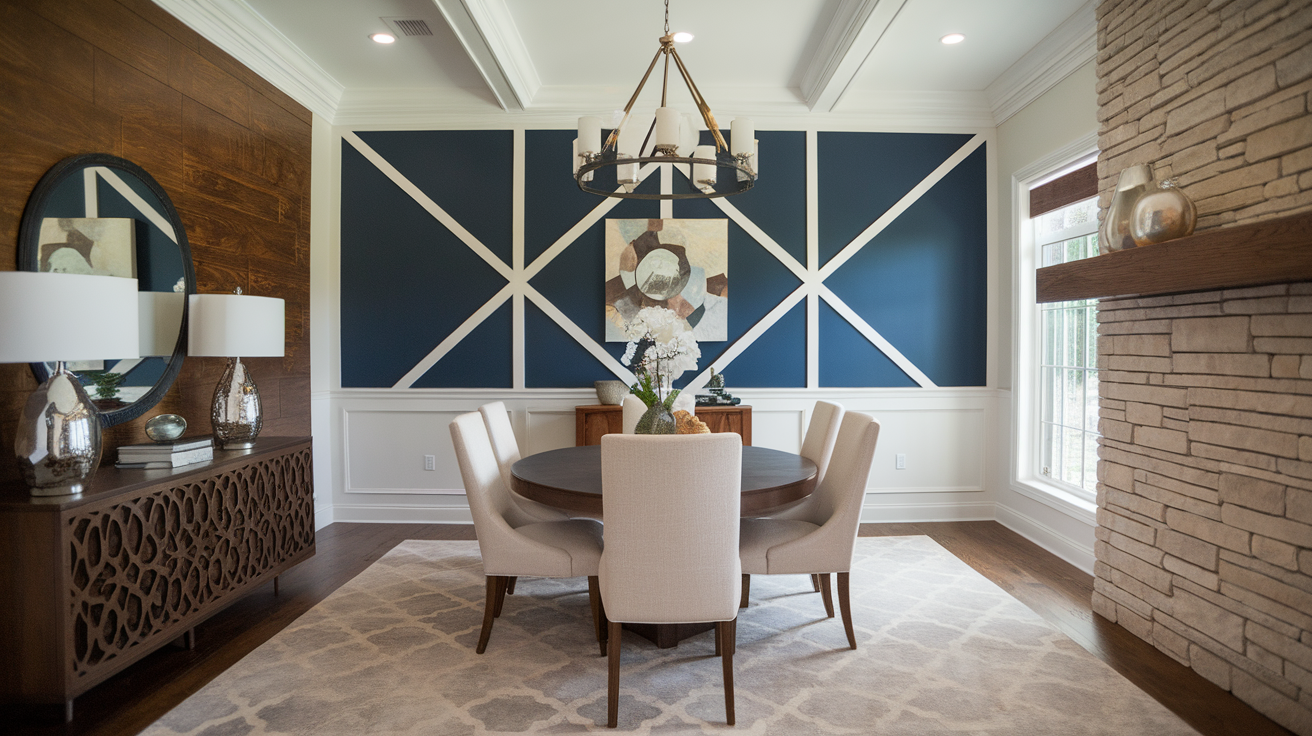Step-by-Step Guide to a DIY Shower Remodel
Have you ever stood in your bathroom, staring at your outdated shower, and thought, “I wish I could give this a fresh, new look”? I know I have.
Remodeling might seem daunting, especially if you’re not a seasoned DIYer.
But guess what? Taking on a shower remodel yourself is not only doable—it’s incredibly rewarding. Not only will you save money, but you’ll also have the pride of creating a unique space.
In this guide, I’m excited to share everything I’ve learned about transforming a shower from drab to fab without breaking the bank.
I’ll walk you through each step and offer tips and tricks that make the process easier than you might think.
So grab your toolbox and turn your bathroom into the oasis you’ve always wanted!
DIY Shower Remodel: Gathering Materials and Tools
1. Materials Checklist
For this project, you’ll need several key materials:
- Shower Base Components: This includes a shower pan or materials to build a custom base and the necessary drain assembly. I find that acrylic or fiberglass pans are both affordable and durable.
- Waterproofing Supplies: You’ll need a waterproofing membrane, mesh tape, and silicone caulk. These are crucial for preventing water damage and mould growth.
- Wall Materials: Cement backer boards and corrosion-resistant screws provide a solid foundation for your tiles and resist moisture effectively.
- Tile Installation Materials: This includes tiles suitable for wet areas, tile adhesive (thin-set mortar), grout, and grout sealer. Remember to calculate extra tiles for cuts and waste.
- Plumbing Fixtures: You’ll need a showerhead, faucet handles, valves, and any additional fixtures you desire. Opting for water-saving fixtures can lead to long-term savings.
- Finishing Materials: Silicone caulk, painter’s tape, and plastic sheeting will help with sealing edges and protecting surfaces during the remodel.
If you’re interested in eco-friendly options, consider using recycled tiles, low-VOC adhesives, and sustainable lumber.
Water-saving fixtures are also a great way to make your bathroom more environmentally friendly.
2. Tools You’ll Need
Having the right tools is essential for a successful remodel:
- Basic Tools: A measuring tape, level, utility knife, hammer, and screwdrivers are must-haves.
- Specialized Tools: You’ll need a tile cutter or wet saw, notched trowels, a grout float, and a caulking gun. These tools help achieve professional results.
- Safety Equipment: To protect yourself during the project, remember safety glasses, gloves, a dust mask or respirator, and knee pads.
Consider whether renting or buying certain tools is more cost-effective, especially the specialized ones you might not use frequently after this project.
3. Shopping Tips
To get the best value for your money:
- Where to Shop: Check out home improvement stores, specialty tile shops, online retailers, and discount outlets. Reclaimed material centers can offer unique finds at lower prices.
- Evaluating Quality: Inspect materials for defects and read reviews. Request samples when possible to ensure you’re happy with the color and quality.
- Saving Money: Look for bulk discounts and seasonal sales, and consider price matching. Understanding return policies can also save you from unnecessary expenses.
Step-by-Step DIY Shower Remodeling Guide
1. Preparing the Work Area

Before diving into demolition, it’s crucial to set up the workspace properly.
To prevent damage, I start by clearing out all personal items from the bathroom—towels, toiletries, and decorations.
Protecting the rest of the bathroom is important, so I cover the floor and any fixtures with drop cloths or plastic sheets.
Safety is a top priority. I wear protective gear: safety glasses to shield my eyes from debris, gloves to protect my hands, and a dust mask if I’ll be dealing with a lot of dust or mold.
Turning off the water supply to the shower prevents accidental leaks, and if electrical fixtures are involved, I switch off the power at the circuit breaker.
2. Demolition

With the area prepped, it’s time to remove the old shower components.
I begin by dismantling fixtures like the showerhead, faucet handles, and any shelves or accessories.
Keeping screws and small parts in labeled bags helps me stay organized.
Removing tiles requires patience and the right tools. Using a hammer and chisel, I gently tap away the grout lines to loosen the tiles.
Starting from the top and working my way down prevents falling debris from damaging surfaces below.
Applying heat with a heat gun can soften the adhesive if I encounter stubborn tiles.
Proper disposal of demolition debris is essential. I line heavy-duty trash cans with contractor bags to contain the mess.
Due to environmental regulations, some materials might require special disposal methods, so I check local guidelines to stay compliant.
3. Plumbing Adjustments
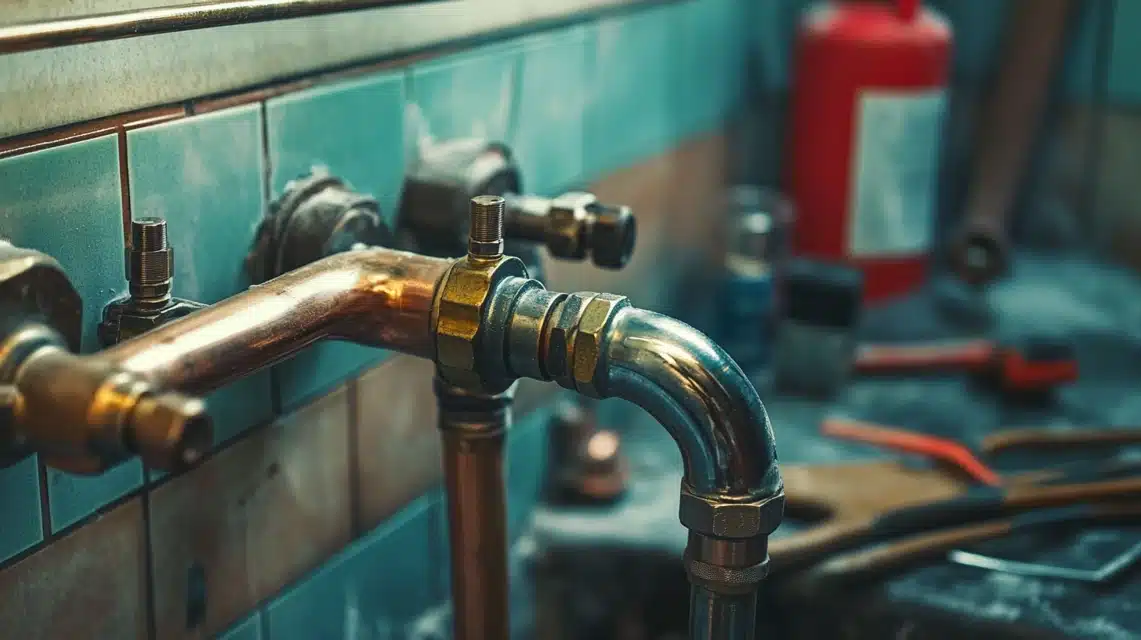
Assessing the plumbing comes next. Adjustments will be necessary if I’m changing the layout or upgrading fixtures.
I inspect the existing pipes for signs of corrosion or leaks. Replacing old galvanized pipes with modern PVC or copper can improve water flow and longevity.
When relocating pipes or installing new valves, precise measurements are key. I mark the new locations on the studs and drill holes accordingly.
Soldering copper pipes requires care; I use a heat shield to protect surrounding materials and always keep a fire extinguisher nearby.
If I’m uncomfortable with complex plumbing tasks, I don’t hesitate to call a professional. It’s better to invest in expert help than risk costly mistakes later.
4. Installing the Shower Base

The shower base sets the foundation for the entire project. Based on my design preferences and skill level, I choose between a pre-made shower pan and a custom-built base.
Installation is relatively straightforward for a pre-made pan. I ensure the subfloor is clean, level, and free of damage.
Applying a layer of mortar underneath the pan provides stability and fills any minor imperfections.
Carefully positioning the pan over the drain hole, I press it into the mortar bed and check that it’s perfectly level using a spirit level.
Building a custom shower base offers more flexibility in size and shape. I construct a frame using pressure-treated lumber, ensuring it’s securely attached to the subfloor.
Creating a sloped mortar bed is crucial for proper drainage; I use a screed to form the slope, directing water toward the drain at a quarter-inch per foot.
5. Waterproofing the Shower
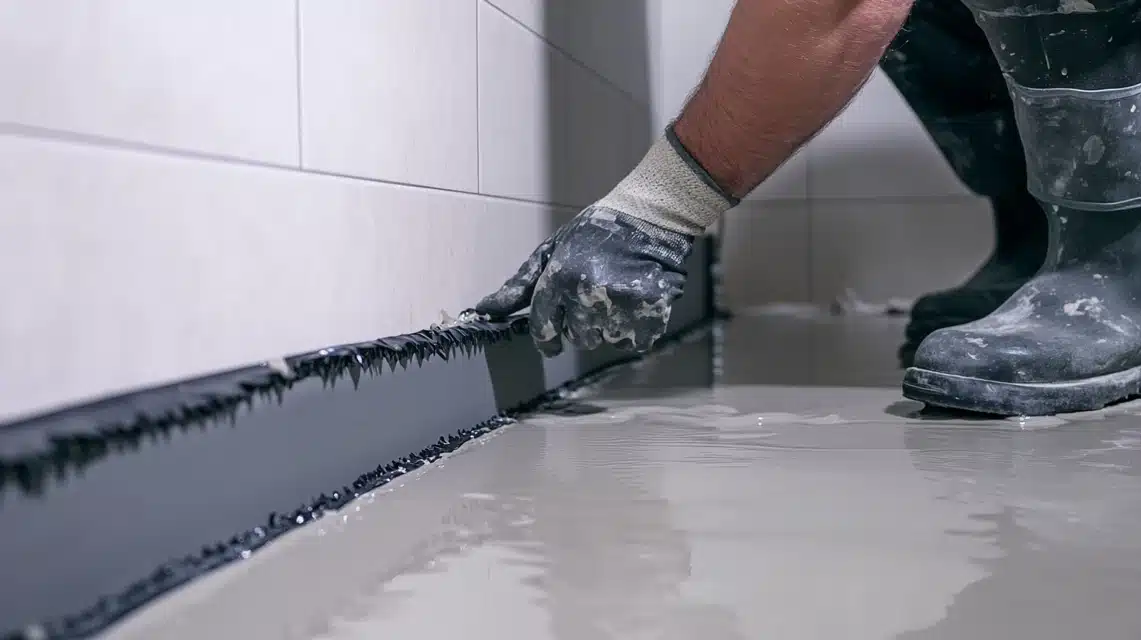
Waterproofing is one of the most critical steps to prevent future issues like mold and water damage.
I choose a reliable waterproofing system, such as a liquid-applied or sheet membrane like the Schluter Kerdi system.
Applying a waterproof membrane involves meticulous work. I cut the membrane to fit the walls and floor, allowing for overlaps at the seams.
Using a notched trowel, I spread thin-set mortar on the surface and press the membrane firmly into place, smoothing out any air bubbles with a flat trowel.
Special attention is given to corners and joints. I use pre-formed corner pieces or carefully fold the membrane to ensure continuous coverage.
Sealing pipe penetrations with specialized seals or collars prevents water from seeping through tiny gaps.
Before moving on, I perform a flood test to check for leaks.
I plug the drain and fill the shower base with water up to just below the threshold, then let it sit for at least 24 hours.
Any drop in the water level indicates a leak that needs to be addressed.
6. Wall Installation
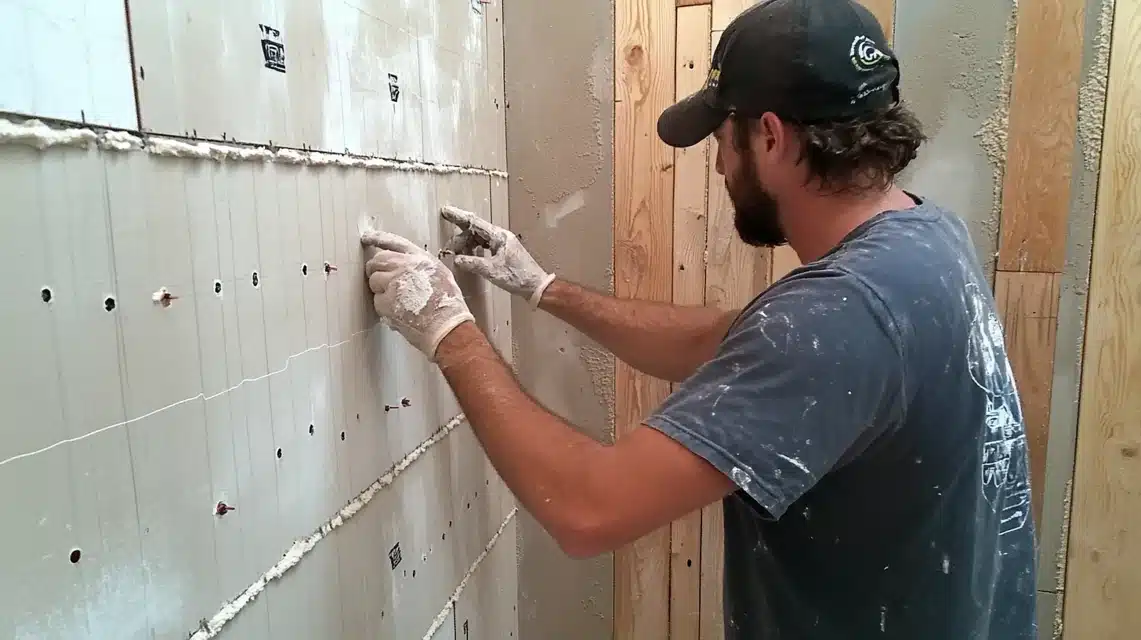
With the base waterproofed, I proceeded to install the walls.
Cement backer boards are my go-to choice for their moisture resistance and durability.
I measure and cut the backer boards to fit the shower walls, using a carbide-tipped scoring knife or a circular saw with a masonry blade.
When attaching the boards to the studs, I use corrosion-resistant screws placed every eight inches along the studs, ensuring the heads are flush with the board surface.
Sealing the seams between boards is essential. I apply fiberglass mesh tape over the joints and cover them with a thin layer of thin-set mortar.
This step reinforces the seams and creates a smooth surface for tiling.
7. Tiling the Shower

Tiling transforms the shower, adding both beauty and functionality.
I select tiles rated for wet areas, considering factors like slip resistance for the floor tiles.
Before setting any tiles, I lay them on the floor to plan the layout. Starting from the center and working outward helps achieve a balanced appearance.
This dry fit allows me to adjust and plan for any necessary cuts.
It is important to mix the thin-set mortar to the right consistency; it should be smooth but not runny.
Using a notched trowel, I spread the mortar onto the wall in small sections to prevent it from drying out before I set the tiles.
Pressing each tile into the mortar, I twist it slightly to ensure good adhesion. Tile spacers help maintain consistent grout lines.
I use a wet saw for clean, precise cuts for tiles that need cutting, especially around obstacles like plumbing fixtures.
After the tiles are set and the mortar has cured—usually after 24 hours—I prepare to grout.
Mixing the grout according to the manufacturer’s instructions, I apply it diagonally across the tiles with a rubber float, pressing it into the joints.
Cleaning excess grout is a multi-step process. Initially, I wipe the tiles with a damp sponge, rinsing them frequently.
Once a haze forms on the tiles, I buff it off with a soft cloth. Sealing the grout after it has fully cured adds an extra protection against stains and moisture.
8. Installing Fixtures and Doors

Reinstalling fixtures brings functionality back to the shower.
I carefully attach the faucet handles, showerhead, and any other controls, using the plumber’s tape on threaded connections to prevent leaks.
If I’m adding a glass shower door, precise measurements are crucial.
I install the mounting brackets according to the manufacturer’s guidelines, double-checking that everything is level and plumb.
Handling glass panels requires caution; I enlist help to maneuver and secure them safely.
Installing a tension rod or mounted rod is simpler for a shower curtain setup. Choosing a curtain that complements the tile design enhances the overall look.
9. Finishing Touches
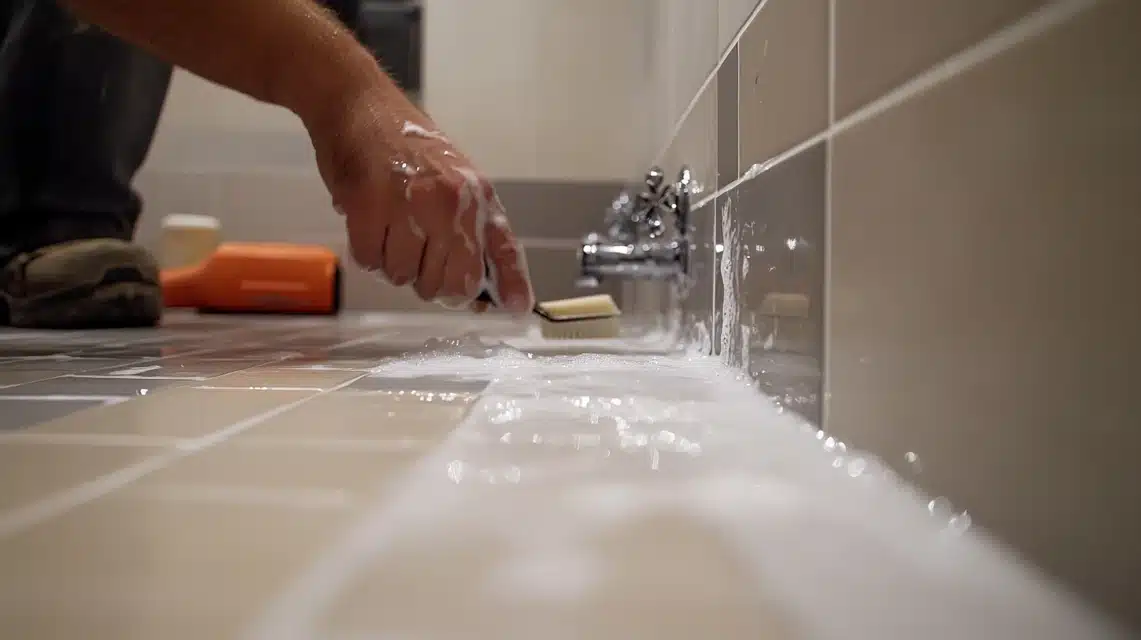
The final steps add polish to the project.
Applying silicone caulk along the edges where the tiles meet the shower base, corners, and around fixtures creates a watertight seal.
I use a caulk smoothing tool or a wet fingertip to achieve a neat finish.
After removing any remaining construction debris, I clean the entire shower with a non-abrasive cleaner. Polishing the fixtures with a soft cloth makes them shine.
Adding accessories like towel hooks, shelves, or soap dispensers enhances functionality. I drill into grout lines rather than tiles to avoid cracking.
Final Thoughts
DIY shower remodel is more than just upgrading a bathroom—it’s a journey of creativity and personal accomplishment.
By rolling up your sleeves and immersing yourself in the process, you’ve enhanced your home’s value and crafted a space that reflects your unique style.
Every challenge overcome and skill learned adds to the satisfaction of stepping into a shower you’ve built yourself.
As you enjoy your new oasis, remember that your success can inspire others to do their DIY adventures.
Sharing your story and the lessons learned fosters a community of confident, capable homeowners.
With determination and guidance, transforming your bathroom isn’t just possible—it’s rewarding and within your grasp.
Here’s to celebrating your hard work and enjoying the fruits of your labor every day.
Frequently Asked Questions
What Is the Cheapest Way to Redo a Shower?
To redo a shower on a budget, focus on cosmetic updates like refinishing tiles, applying waterproof paint, or installing adhesive shower panels.
Reusing existing fixtures and doing the work yourself significantly cuts costs.
Shopping for discounted materials and being creative with affordable options can transform your shower inexpensively.
Can I Replace My Shower Myself?
Yes, you can replace your shower if you’re comfortable with DIY projects and have the necessary tools.
A homeowner can successfully remodel their shower by following detailed guides and paying careful attention to plumbing and waterproofing.
For complex tasks, don’t hesitate to consult a professional.
How Much Does It Cost to Remodel a Shower DIY?
A DIY shower remodel typically costs between $500 and $2,500, depending on the materials chosen and the project’s scope.
Expenses include tiles, fixtures, waterproofing supplies, and tools.
Doing the labor yourself greatly reduces costs compared to hiring professionals, making it an economical option.
How Much Does It Cost to Redo a Walk-In Shower?
Redoing a walk-in shower can range from $1,000 to $5,000 when tackled as a DIY project.
Costs vary based on materials, fixtures, and any custom features you choose.
Opting for budget-friendly materials and handling the labor yourself helps keep expenses manageable.







